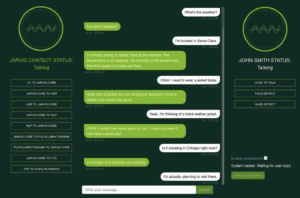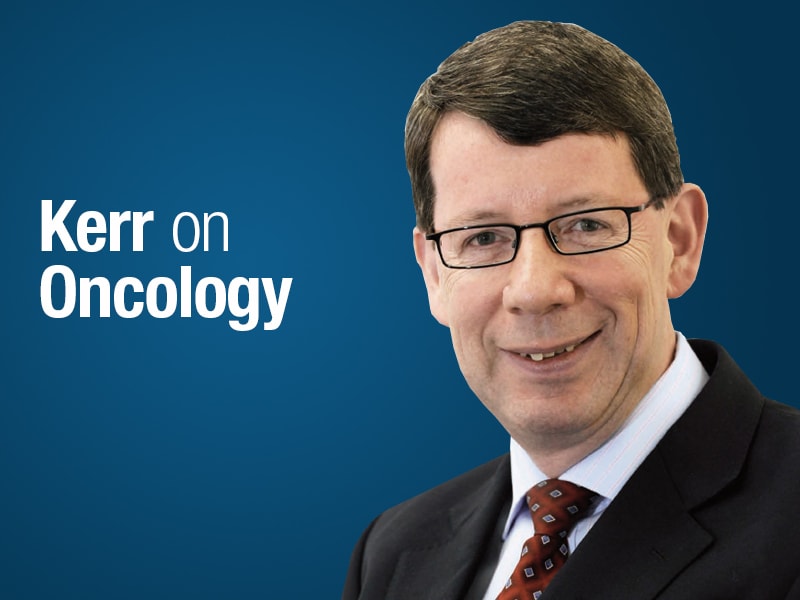This transcript has been edited for clarity.
Hello. I'm David Kerr, professor of cancer medicine at University of Oxford. Today I'd like to talk about communication and how sometimes that can be lost in translation.
There's no doubt that our greatest weapon as cancer doctors in any consultation with a patient is clarity of communication. It is absolutely critical, particularly when we're meeting patients for the first time and we have an enormous amount of information to convey. Indeed, there are some studies from the old days suggesting that patients retain only about 10% of the information that we are trying to communicate.
Of course, there is a large amount of backup information that we can provide to the patient. We often record our interviews and discussions with patients on mobile phones. There is also a ton of information that we can give them from the internet about a particular treatment type, the complexities of the treatment that we're offering, and so on.
And we believe that two heads are better than one, so we invite our patients to come with a partner, relative, friend, or someone that they trust and feel could help take notes, compare, and contrast.
I would like to give two examples, one from the past and one much more recent, from clinic on Friday, in which even I — and I've been a cancer doctor for 30 years and consider myself a very reasonable communicator — can sometimes cause confusion.
The first was some time ago. It was a patient who came with an advanced, difficult cholangiocarcinoma and surgery wasn't possible. In those days, we were offering chemotherapy that had very limited benefits. When I see patients for the first time, I explain both what we can do and what we cannot.
Cure was not a possibility for this patient. Our treatment was palliative. It was, we hope, improving the quality of life and buying time, but it was not a cure. This is something that I wish to be able to communicate to my patients so that we start off our relationship and our journey understanding what, I guess in a way, the destination would be.
The patient did not speak English. He was a very senior Imam leader within the Muslim faith. He came with four of his acolytes — students — all of whom spoke perfect English and who could translate anything that I said to their leader, teacher, and mentor.
When it came to that particular point, the consideration of his limited lifespan, the students didn't feel that they were able to pass that information on. They felt that the gap between their master and them, as students, was too large for them to be able to suggest — in any size, shape, or form — his limited mortality.
I found that interesting but frustrating at the time. I managed to get over it by eventually finding another church leader of similar rank, if you like, who could allow me to sit down and deal with this. He was a rather remarkable cleric. He was a great man. There was no doubt about it. He accepted with grace, gentleness, and humility. We got on terribly well together.
That was an interesting example of how specifically that attempt at translation was lost. Of course, it made me think that the lads were very honest with me. They said they couldn't; rather than giving a different message or traducing my message, they were very clear about it.
It made me think that when we're dealing with foreign languages, we genuinely don't know what the translator is saying or how clearly they're passing things on.
The second example of something lost in translation happened in clinic on Friday. We had a good giggle about it. It was a terribly elderly patient who was with her son. It was a video conference and she was coming as a new patient. She was in her 10th decade and she had moderately advanced GI cancer beyond the capacity of the surgeons to operate. Therefore, she was referred to me for consideration of chemotherapy, something that she had absolutely no interest in pursuing and nor had I any real strong desire to treat her with chemotherapy.
Her son, who was with her, posed the question: "How long has my mother got, Doc?" In that setting, what I usually say is that I am neither clever enough or daft enough to be one of those doctors who says, "You've got 3 months, 6 months, 9 months, 12 months," but rather that "You've got months of life to live."
His old mum was a bit deaf. Therefore, he was translating what I was saying in a loud voice. He took my phrase, "I'm not clever enough or daft enough to give specific times," and said to his mom, "The doctor says he's not very clever, mother." The old lady said, "Oh my goodness, should we get a second opinion?"
I had to jump in and say, "No, no, no, no, no, I'm very clever. I'm very clever, but you just mixed the message up in some way." They saw the funny side of it and that was fine.
Absurd, wasn't it? How pathetic that I had to tell an old lady, you know, I'm very clever. Honestly, really, I hold my hands up. I'm very clever.
It just shows how sometimes, even with gifted communicators who are very clever, things can get lost in translation.
Thanks for listening, as always. Any comments or stories that you have yourself about how sometimes medical messages might be lost in translation, I'd be very interested to hear them. For the time being, Medscapers, ahoy. Thank you.
David J. Kerr, CBE, MD, DSc, is a professor of cancer medicine at the University of Oxford. He is recognized internationally for his work in the research and treatment of colorectal cancer and has founded three university spin-out companies: COBRA Therapeutics, Celleron Therapeutics, and Oxford Cancer Biomarkers. In 2002, he was appointed Commander of the British Empire by Queen Elizabeth II.
Follow Medscape on Facebook, Twitter, Instagram, and YouTube
![]() View original content to download multimedia:https://ift.tt/3e5yttf
View original content to download multimedia:https://ift.tt/3e5yttf





